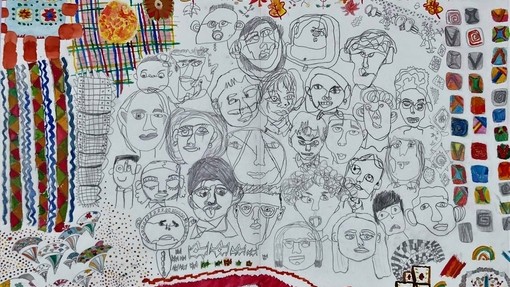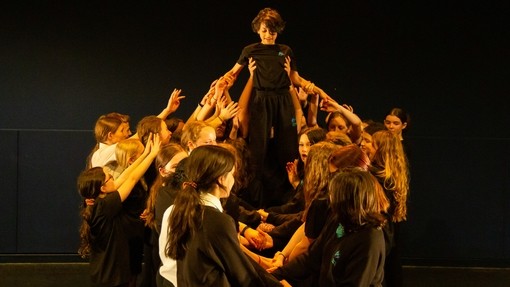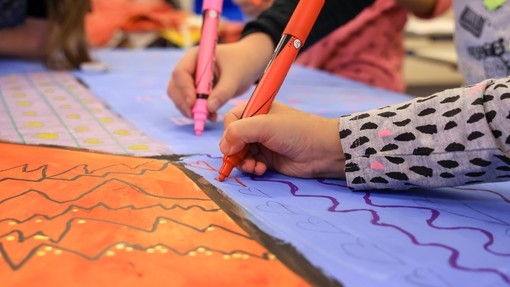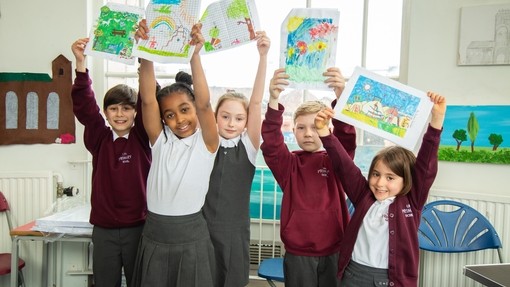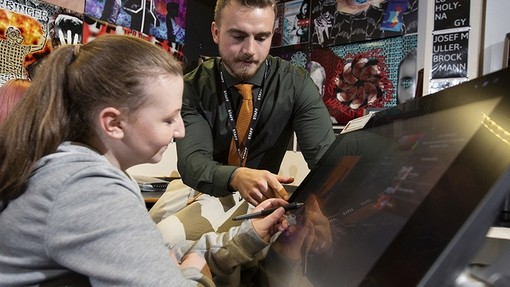Elstree Screen Arts Academy: Achieving our Artsmark ambition
Elstree Screen Arts Academy is a comprehensive secondary school and post-sixteen college, who recently received the prestigious Artsmark Platinum Award. They specialise in applied education and training in the crafts, trades, and technical disciplines - skills that underpin the creative arts industries. Headteacher Chris Mitchell reflects on how using Artsmark established a clearer framework for high-quality cultural learning and some of the great things they achieved during the process…
The beginning
We began our Artsmark journey in 2019, seeking to establish a clearer framework for high-quality cultural learning and develop outward-facing partnerships beyond our own school campus – into the wider community and the creative industries. We also wanted to become advocates for the value of applied creative learning more widely across the education sector. With support from creative organisations such as the Royal Opera House Bridge and the Royal Society of Arts (RSA), we began engaging with well-researched content about cultural education to broaden our understanding of creative pedagogy. This included ‘Creativity: Why it Matters’ by Arts Council England CEO Darren Henley CBE and ‘Educating Ruby’ by Guy Claxton & Bill Lucas, to which I bought copies for every member of staff. From here, we began to define what a creative culture meant to our school community, our young people, our staff, and our partners. Taking the time for this first step prepared us to create our strategic cultural education plan, the implementation of which started to change things.
Seeing a difference
Our new approach to teaching and learning embraced a more connected and relational approach to pedagogy, using the Artsmark Framework to inform our plan, alongside a slightly adapted version of Claxton & Lucas’ ‘7 C’s’. The seven Cs, referred to in the book ‘Educating Ruby’, are Creativity, Confidence, Curiosity, Compassion, Communication, Commitment, and Craftmanship. We implemented these principles across the curriculum and began to see significant improvements in student behaviour and attendance. This was especially evident with persistent absentees who have re-engaged with their studies, despite negative experiences in previous education.
Cultural collaborations
Embarking on our Artsmark journey helped to revitalise objectives, one of which was to increase access to the creative industries for young people underrepresented in the creative sector, and those from disadvantaged backgrounds. In 2021, we partnered with ScreenSkills and the BFI to become the UK’s second Centre for Screen Excellence. Centres of Screen Excellence are designed to bring together local and national partners to build capacity in production hubs with a more inclusive, highly skilled workforce. We established a partnerships board and now work with industry partners including Sky, Stage 50, the BBC, and Netflix to provide training and creative employment opportunities for our diverse young people. This year, Challenge Partners identified our school as a centre of national excellence for “Industry partnerships and project-based creative learning and training”, which was an amazing achievement.
We have also developed our own in-house media production company, which works with students to produce industry-level content for a range of professional clients. So far, this has included Sky Studios, Apples & Snakes, The National Portrait Gallery, The MOBO Awards, Trestle Theatre Company, and our Local Enterprise Partnerships. These connections have enabled us to work with other local primary and secondary schools. We proudly hosted the Elstree Film Festival, providing opportunities for children and young people across the country to discover filmmaking, whereby 23 amazing schools participated.
Tips for schools thinking of embarking on an Artsmark journey
Over the past two and a half years, whilst on our Artsmark journey, we have become a much more confident school with a more realised creative vision. Here are my top tips for other school’s exploring ways to develop cultural learning across their curriculum:
- Research and clearly define your definitions of creativity and culture. Create a framework together that your students and staff can collectively own. Creative education can’t be too subjective, or it will be hard to ensure consistent quality.
- Once you have your shared creative framework, implement it across your whole curriculum through schemes of work and share it through pedagogical practice. Have the rollout of your creative framework in your school development plan to ensure its central to your CPD (Continuing Professional Development) calendar, and as a standing agenda item in line management and department meetings.
- Say yes. Punch above your weight. Agree to projects that seem just slightly beyond your capacity. Fully commit to curriculum beyond the timetabled provision. Look outwards and connect with mutual collaborators.
Looking to the future
In the spirit of taking risks and saying yes, we’re hoping to increase our scale of production to create more accessible opportunities for all. We also want to develop the scale and quality of creative careers advice to support other schools (who may not have our specialism) to increase awareness of creative arts opportunities for young people.
But first, we’ve just landed a brief to produce a short film for the police! We’re also looking to produce an original 7-part animation boxset based on the 7Cs and launch a new podcast channel. However, we first need to prepare for our GCSE and A-Level mock exams next week!

